-
 Bitcoin
Bitcoin $106,754.6083
1.33% -
 Ethereum
Ethereum $2,625.8249
3.80% -
 Tether USDt
Tether USDt $1.0001
-0.03% -
 XRP
XRP $2.1891
1.67% -
 BNB
BNB $654.5220
0.66% -
 Solana
Solana $156.9428
7.28% -
 USDC
USDC $0.9998
0.00% -
 Dogecoin
Dogecoin $0.1780
1.14% -
 TRON
TRON $0.2706
-0.16% -
 Cardano
Cardano $0.6470
2.77% -
 Hyperliquid
Hyperliquid $44.6467
10.24% -
 Sui
Sui $3.1128
3.86% -
 Bitcoin Cash
Bitcoin Cash $455.7646
3.00% -
 Chainlink
Chainlink $13.6858
4.08% -
 UNUS SED LEO
UNUS SED LEO $9.2682
0.21% -
 Avalanche
Avalanche $19.7433
3.79% -
 Stellar
Stellar $0.2616
1.64% -
 Toncoin
Toncoin $3.0222
2.19% -
 Shiba Inu
Shiba Inu $0.0...01220
1.49% -
 Hedera
Hedera $0.1580
2.75% -
 Litecoin
Litecoin $87.4964
2.29% -
 Polkadot
Polkadot $3.8958
3.05% -
 Ethena USDe
Ethena USDe $1.0000
-0.04% -
 Monero
Monero $317.2263
0.26% -
 Bitget Token
Bitget Token $4.5985
1.68% -
 Dai
Dai $0.9999
0.00% -
 Pepe
Pepe $0.0...01140
2.44% -
 Uniswap
Uniswap $7.6065
5.29% -
 Pi
Pi $0.6042
-2.00% -
 Aave
Aave $289.6343
6.02%
How to operate the monthly level breakthrough + weekly retracement confirmation?
A monthly level breakthrough signals a potential trend shift, confirmed by weekly retracement patterns for higher-probability trade entries.
Jun 15, 2025 at 07:42 am
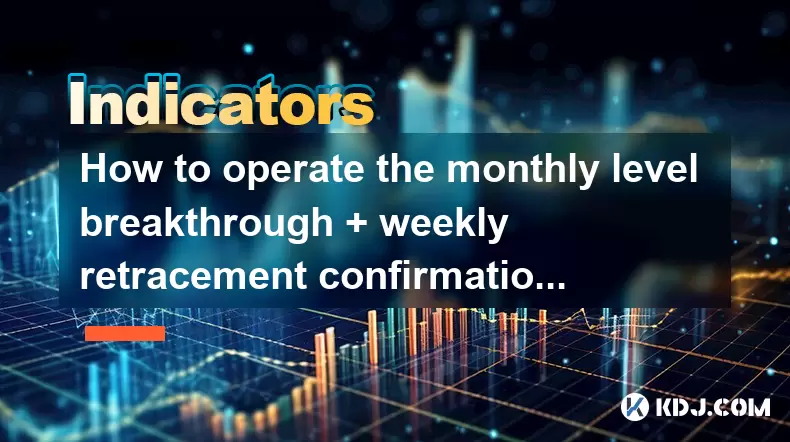
Understanding Monthly Level Breakthrough
To effectively operate the monthly level breakthrough strategy, traders must first identify key resistance and support levels on the monthly chart. These levels are often significant because they represent long-term price action that can indicate potential reversals or continuations. Identifying a breakout occurs when the price moves beyond these established levels, suggesting a shift in market sentiment.
- Analyze historical data: Look at past price movements to determine where significant support and resistance levels have formed over months.
- Use technical indicators: Tools like moving averages or Bollinger Bands can help confirm the strength of a breakout by showing whether the price is overbought or oversold.
- Monitor volume: A genuine breakout is usually accompanied by a surge in trading volume, which indicates strong buyer interest.
Once a breakout is identified, it's crucial to wait for confirmation before entering a trade. This can be done by observing if the price continues to move in the direction of the breakout in subsequent sessions.
Weekly Retracement Confirmation Explained
After identifying a monthly level breakthrough, the next step involves looking at the weekly chart for retracement confirmation. This technique helps traders filter out false breakouts and ensures that the trend has indeed reversed or continued. Retracement confirmation typically involves waiting for the price to pull back to a key level before entering a trade.
- Identify Fibonacci retracement levels: Use Fibonacci retracement tools on the weekly chart to find potential areas where the price might retrace before continuing its original trend.
- Watch for candlestick patterns: Bullish or bearish candlestick patterns during a retracement can provide clues about the likelihood of the trend resuming.
- Check for confluence with other indicators: If multiple indicators (like RSI or MACD) align with the retracement level, it strengthens the case for a valid trade setup.
By combining both the monthly breakout with the weekly retracement, traders can increase their probability of success by ensuring they are entering trades in the direction of the larger trend while also getting favorable risk-reward ratios.
Practical Steps for Implementing the Strategy
Implementing the monthly level breakthrough and weekly retracement confirmation strategy requires careful planning and execution. Here’s how to go about it:
- Set up your charts correctly: Ensure you have both the monthly and weekly charts open side by side for easy reference. This allows you to quickly compare the two timeframes.
- Mark key levels clearly: Use horizontal lines to mark the significant support and resistance levels on both charts. This visual aid helps in quickly identifying potential breakouts and retracements.
- Establish entry points: Once a breakout is confirmed on the monthly chart and a retracement is observed on the weekly chart, set your entry point slightly above or below the retracement level depending on the direction of the trend.
- Place stop-loss orders: To manage risk, place a stop-loss order just below the recent swing low (for a long position) or above the recent swing high (for a short position).
- Determine take-profit levels: Based on the size of the initial move, set realistic profit targets using measured moves or previous resistance levels converted into support.
Each of these steps should be executed with precision to ensure that the strategy works as intended. Discipline is key here; impulsive decisions can lead to losses even if the strategy is sound.
Risk Management Considerations
When applying any trading strategy, especially one involving multiple timeframes like the monthly level breakthrough and weekly retracement confirmation, effective risk management is essential. Proper risk management not only protects capital but also enhances the overall performance of the trading strategy.
- Limit position sizes: Never risk more than a small percentage of your trading account on any single trade. A common rule of thumb is to risk no more than 1-2% per trade.
- Adjust stops based on volatility: In highly volatile markets, consider widening your stop-loss orders to avoid being stopped out prematurely due to normal price fluctuations.
- Review and adjust regularly: As market conditions change, so too should your approach to risk management. Regularly review your trades and adjust your strategies accordingly.
Risk management isn’t just about avoiding losses; it’s about preserving capital so that you can continue trading through various market cycles. By adhering to strict risk parameters, traders can ensure longevity in the markets.
Common Mistakes to Avoid
While implementing the monthly level breakthrough and weekly retracement confirmation strategy, there are several pitfalls that traders should be aware of and strive to avoid. Recognizing these common mistakes can significantly improve trading outcomes.
- Overtrading: The excitement of spotting a potential breakout can lead to taking too many trades. It’s important to stick to your trading plan and only enter trades that meet all your criteria.
- Ignoring the bigger picture: Focusing solely on short-term movements without considering the broader market context can result in poor decision-making. Always assess the overall trend and economic environment.
- Failing to adapt: Markets evolve, and what worked yesterday may not work today. Stay flexible and willing to adapt your strategy based on new information or changing conditions.
- Neglecting emotional discipline: Emotions such as fear and greed can cloud judgment. Maintain emotional control by setting clear rules and sticking to them rigorously.
Avoiding these mistakes requires self-awareness and continuous learning. Traders who recognize their tendencies and work actively to correct them will find greater success in their trading endeavors.
Frequently Asked Questions
What timeframe combinations are best suited for this strategy?
The primary combination involves the monthly and weekly charts, but some traders may incorporate daily charts for additional context. However, sticking to the monthly and weekly provides clarity and reduces noise from shorter-term fluctuations.
Can this strategy be applied to all cryptocurrencies?
While the strategy can be applied to various cryptocurrencies, it tends to perform better with those that have sufficient liquidity and volume. Less liquid assets may produce unreliable signals due to erratic price movements.
How do I know if a breakout is genuine?
A genuine breakout is typically characterized by increased volume, follow-through in the direction of the breakout, and confirmation from other technical indicators. Waiting for a close above/below the level on the monthly chart adds another layer of confirmation.
Is it necessary to use automated tools for this strategy?
Automated tools can enhance efficiency by alerting you to potential breakouts and retracements, but they aren't mandatory. Many successful traders manually analyze their charts and make decisions based on their analysis.
Disclaimer:info@kdj.com
The information provided is not trading advice. kdj.com does not assume any responsibility for any investments made based on the information provided in this article. Cryptocurrencies are highly volatile and it is highly recommended that you invest with caution after thorough research!
If you believe that the content used on this website infringes your copyright, please contact us immediately (info@kdj.com) and we will delete it promptly.
- 2025-W Uncirculated American Gold Eagle and Dr. Vera Rubin Quarter Mark New Products
- 2025-06-13 06:25:13
- Ruvi AI (RVU) Leverages Blockchain and Artificial Intelligence to Disrupt Marketing, Entertainment, and Finance
- 2025-06-13 07:05:12
- H100 Group AB Raises 101 Million SEK (Approximately $10.6 Million) to Bolster Bitcoin Reserves
- 2025-06-13 06:25:13
- Galaxy Digital CEO Mike Novogratz Says Bitcoin Will Replace Gold and Go to $1,000,000
- 2025-06-13 06:45:13
- Trust Wallet Token (TWT) Price Drops 5.7% as RWA Integration Plans Ignite Excitement
- 2025-06-13 06:45:13
- Ethereum (ETH) Is in the Second Phase of a Three-Stage Market Cycle
- 2025-06-13 07:25:13
Related knowledge
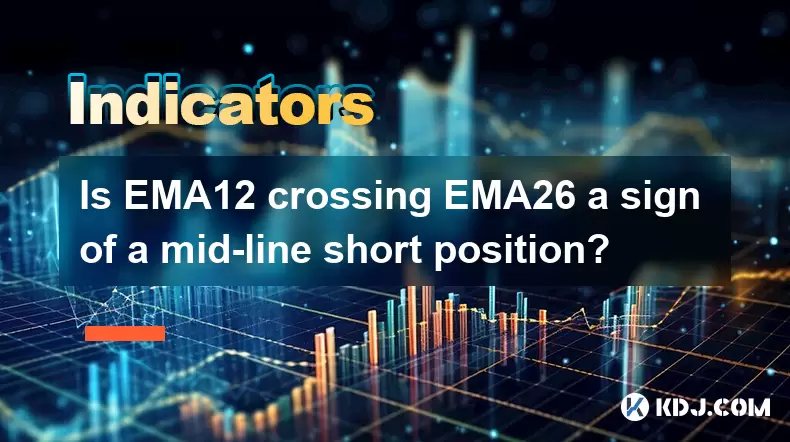
Is EMA12 crossing EMA26 a sign of a mid-line short position?
Jun 16,2025 at 07:22pm
Understanding EMA12 and EMA26 in Cryptocurrency TradingIn the world of cryptocurrency trading, Exponential Moving Averages (EMAs) are widely used tools for analyzing price trends. Specifically, the EMA12 and EMA26 are two of the most commonly referenced EMAs among traders. The EMA12 represents a short-term moving average calculated over the past 12 time...
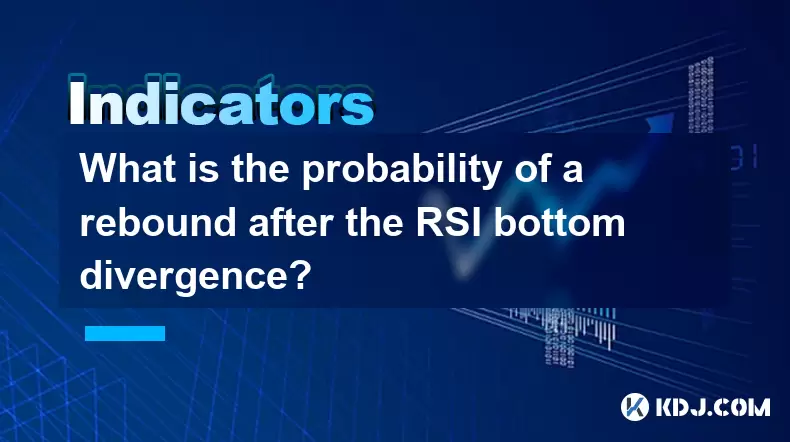
What is the probability of a rebound after the RSI bottom divergence?
Jun 16,2025 at 06:50pm
Understanding RSI Bottom Divergence in Cryptocurrency TradingThe Relative Strength Index (RSI) is a widely used momentum oscillator in technical analysis, particularly within the cryptocurrency market. It helps traders identify overbought or oversold conditions and potential reversal points. A bottom divergence occurs when the price of an asset makes a ...
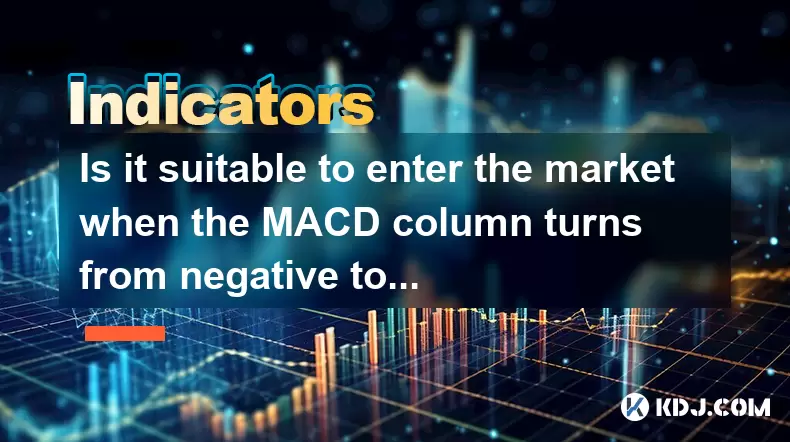
Is it suitable to enter the market when the MACD column turns from negative to positive?
Jun 16,2025 at 06:07pm
Understanding the MACD IndicatorThe Moving Average Convergence Divergence (MACD) is a widely used technical analysis tool in cryptocurrency trading. It consists of three main components: the MACD line, the signal line, and the MACD histogram (often referred to as the MACD column). The MACD line is calculated by subtracting the 26-period Exponential Movi...
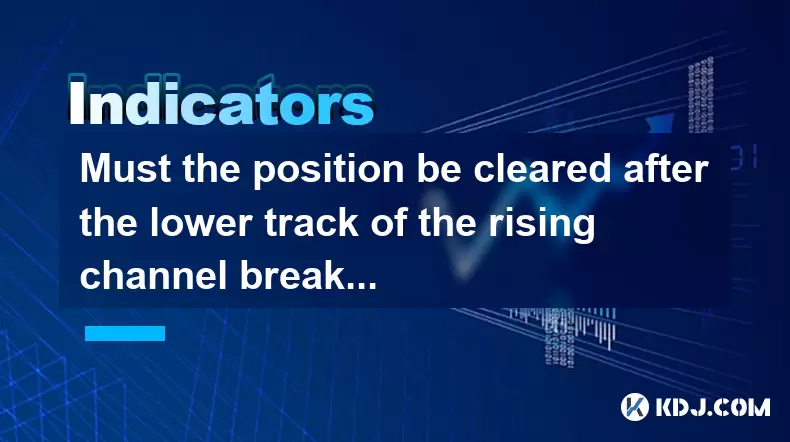
Must the position be cleared after the lower track of the rising channel breaks?
Jun 16,2025 at 04:43pm
Understanding the Rising Channel BreakdownIn technical analysis, a rising channel is formed by drawing two parallel trendlines: one connecting higher lows and another connecting higher highs. When the price breaks below the lower trendline of this channel, it signals a potential reversal or at least a pause in the uptrend. This event often triggers trad...
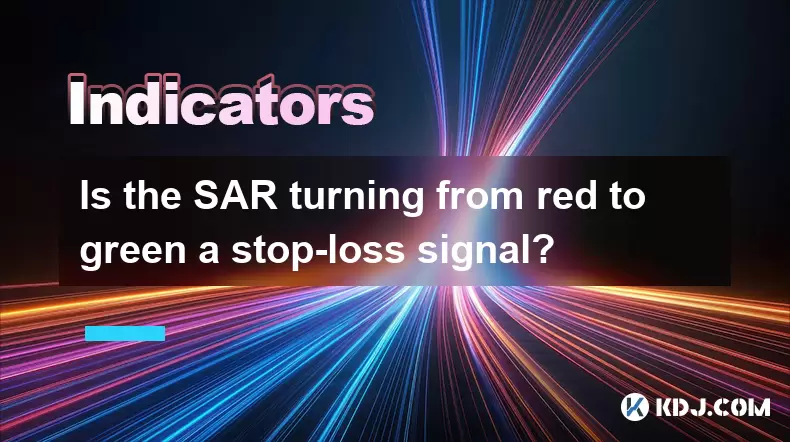
Is the SAR turning from red to green a stop-loss signal?
Jun 16,2025 at 07:07pm
Understanding SAR in Cryptocurrency TradingThe Parabolic SAR (Stop and Reverse) is a technical indicator widely used in cryptocurrency trading to identify potential reversals in price movement. It appears as a series of dots either above or below the asset's price chart. When the dots shift from one side of the price to the other, it signals a reversal....
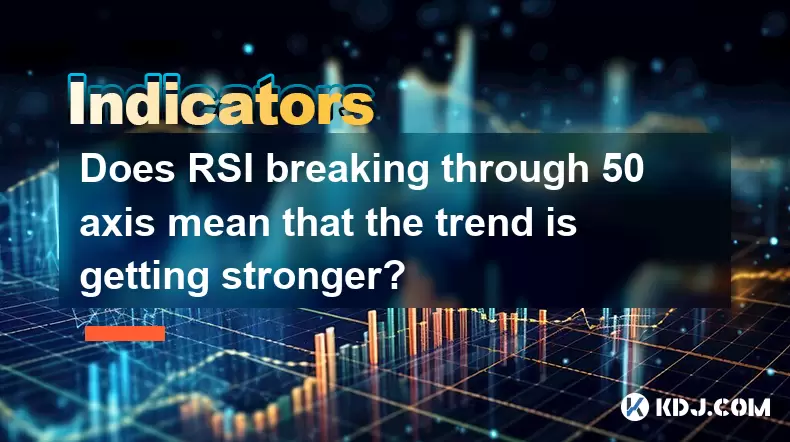
Does RSI breaking through 50 axis mean that the trend is getting stronger?
Jun 16,2025 at 06:35pm
Understanding the RSI Indicator and Its Role in Cryptocurrency TradingThe Relative Strength Index (RSI) is a momentum oscillator widely used in technical analysis to measure the speed and change of price movements. In the cryptocurrency market, where volatility is high and trends can shift rapidly, understanding RSI levels becomes crucial for traders. T...

Is EMA12 crossing EMA26 a sign of a mid-line short position?
Jun 16,2025 at 07:22pm
Understanding EMA12 and EMA26 in Cryptocurrency TradingIn the world of cryptocurrency trading, Exponential Moving Averages (EMAs) are widely used tools for analyzing price trends. Specifically, the EMA12 and EMA26 are two of the most commonly referenced EMAs among traders. The EMA12 represents a short-term moving average calculated over the past 12 time...

What is the probability of a rebound after the RSI bottom divergence?
Jun 16,2025 at 06:50pm
Understanding RSI Bottom Divergence in Cryptocurrency TradingThe Relative Strength Index (RSI) is a widely used momentum oscillator in technical analysis, particularly within the cryptocurrency market. It helps traders identify overbought or oversold conditions and potential reversal points. A bottom divergence occurs when the price of an asset makes a ...

Is it suitable to enter the market when the MACD column turns from negative to positive?
Jun 16,2025 at 06:07pm
Understanding the MACD IndicatorThe Moving Average Convergence Divergence (MACD) is a widely used technical analysis tool in cryptocurrency trading. It consists of three main components: the MACD line, the signal line, and the MACD histogram (often referred to as the MACD column). The MACD line is calculated by subtracting the 26-period Exponential Movi...

Must the position be cleared after the lower track of the rising channel breaks?
Jun 16,2025 at 04:43pm
Understanding the Rising Channel BreakdownIn technical analysis, a rising channel is formed by drawing two parallel trendlines: one connecting higher lows and another connecting higher highs. When the price breaks below the lower trendline of this channel, it signals a potential reversal or at least a pause in the uptrend. This event often triggers trad...

Is the SAR turning from red to green a stop-loss signal?
Jun 16,2025 at 07:07pm
Understanding SAR in Cryptocurrency TradingThe Parabolic SAR (Stop and Reverse) is a technical indicator widely used in cryptocurrency trading to identify potential reversals in price movement. It appears as a series of dots either above or below the asset's price chart. When the dots shift from one side of the price to the other, it signals a reversal....

Does RSI breaking through 50 axis mean that the trend is getting stronger?
Jun 16,2025 at 06:35pm
Understanding the RSI Indicator and Its Role in Cryptocurrency TradingThe Relative Strength Index (RSI) is a momentum oscillator widely used in technical analysis to measure the speed and change of price movements. In the cryptocurrency market, where volatility is high and trends can shift rapidly, understanding RSI levels becomes crucial for traders. T...
See all articles

























































































